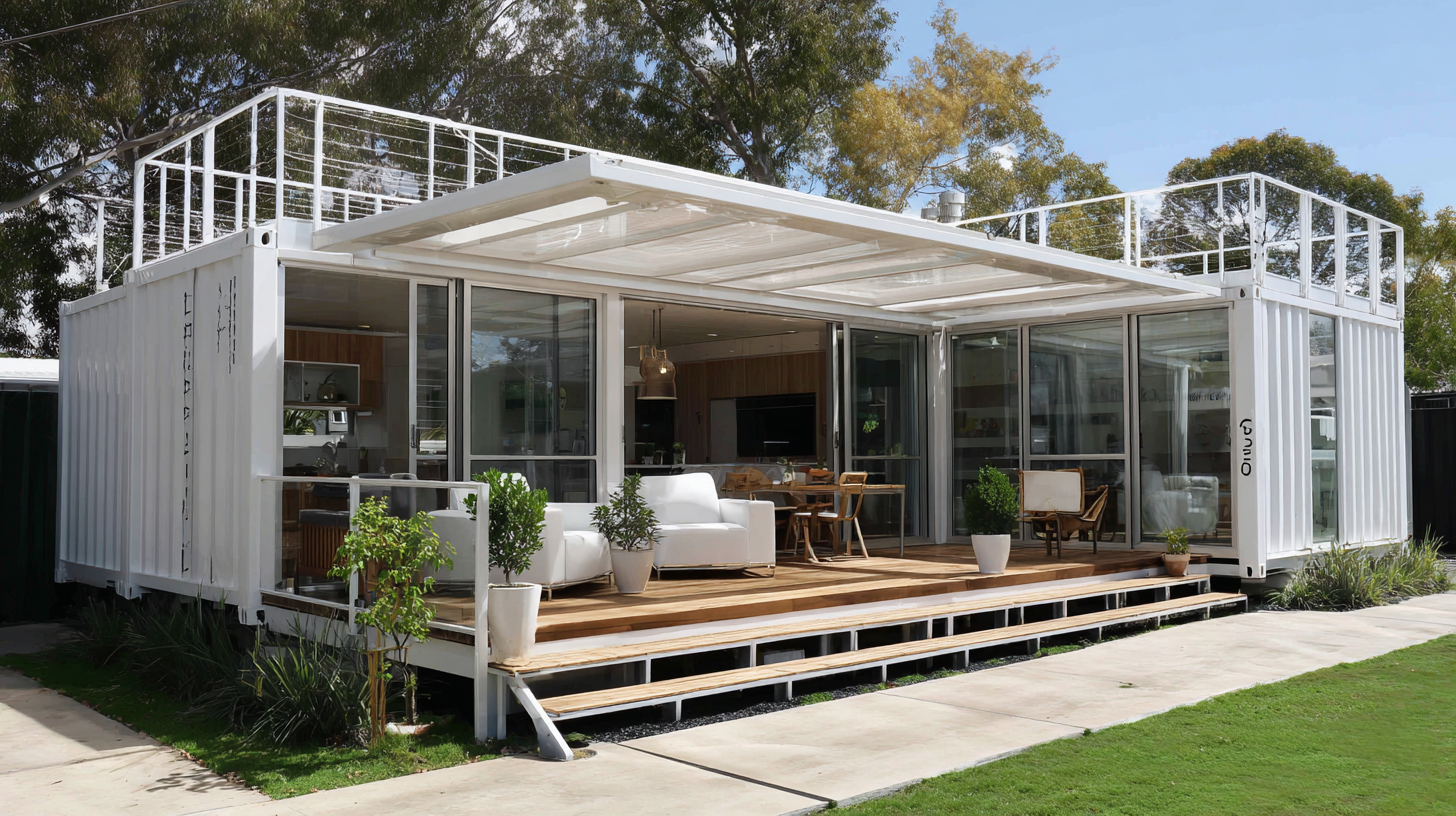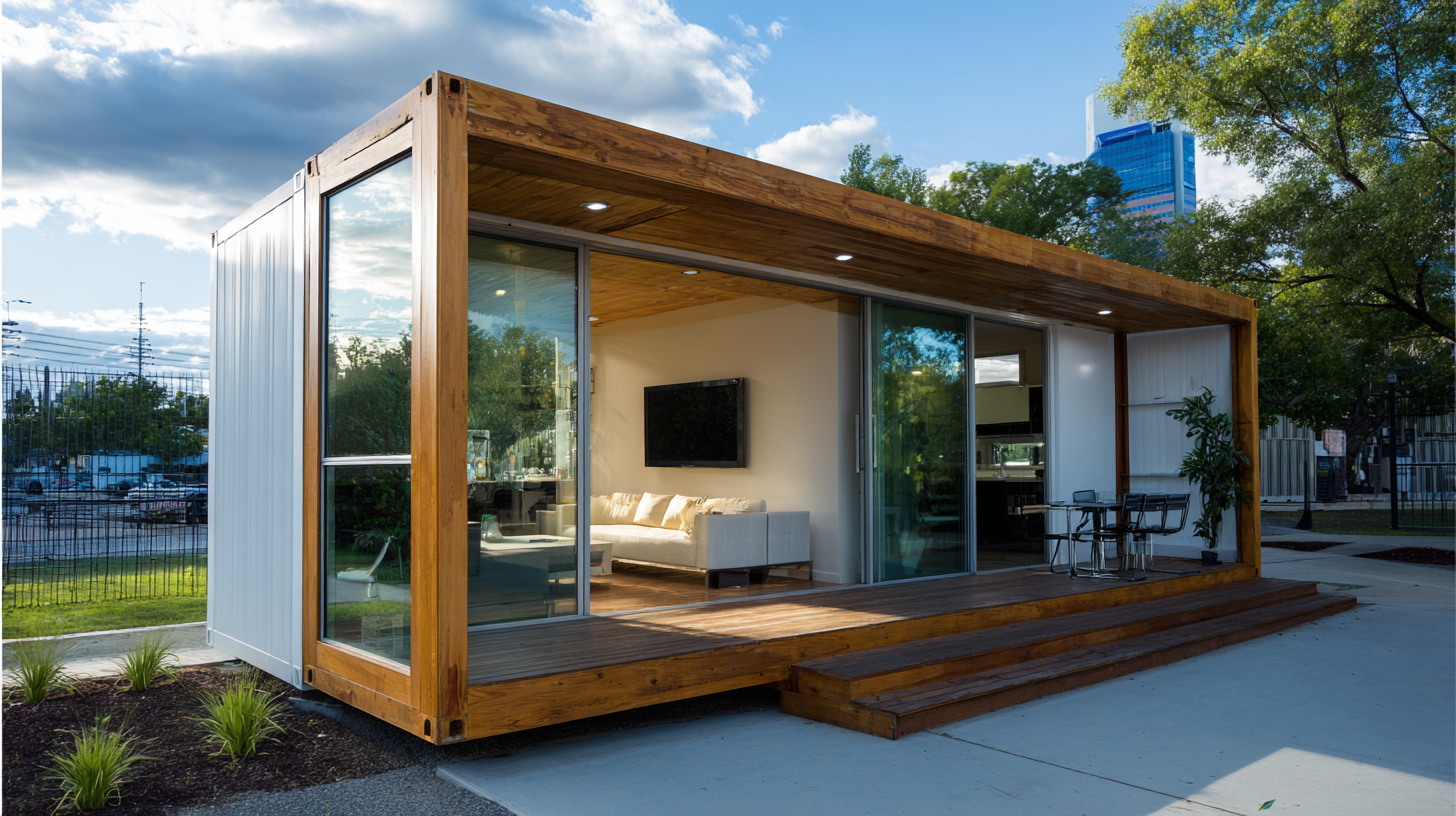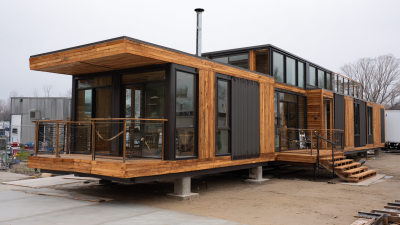In recent years, the concept of sustainable living has gained significant traction, prompting homeowners to seek innovative solutions that harmonize with environmental stewardship. Among these solutions, Modular Shipping Container Homes have emerged as a leading choice for those looking to balance modern living with ecological consciousness. These homes, crafted from repurposed shipping containers, offer a unique blend of affordability, durability, and eco-friendliness, making them an enticing option for many.
One of the most compelling advantages of living in Modular Shipping Container Homes is their minimal environmental impact. By utilizing existing materials, these homes significantly reduce the need for new resources, thereby conserving energy and reducing waste. Furthermore, their design flexibility allows for creative adaptations to suit diverse lifestyles and preferences, enabling homeowners to create personalized living spaces while still adhering to sustainable practices. As we explore the top benefits of Modular Shipping Container Homes, it becomes clear that they not only represent a practical solution for housing but also contribute to a more sustainable future.

Modular shipping container homes are emerging as a sustainable housing solution that aligns with the principles of environmental sustainability. One of the key benefits is their minimal environmental impact. These homes are often made from repurposed materials, significantly reducing the need for new construction resources. This repurposing not only conserves raw materials but also cuts down on waste, making shipping container homes a more eco-friendly alternative to traditional housing.
Additionally, modular shipping container homes are highly energy-efficient. Their design allows for better insulation and the potential for incorporating renewable energy sources, such as solar panels. This capability enables residents to rely less on fossil fuels, thereby decreasing their carbon footprint. Furthermore, the compact nature of these homes encourages a simpler lifestyle, promoting sustainable living practices that reduce overall consumption and waste. By choosing modular shipping container homes, individuals can actively contribute to environmental conservation while enjoying modern, versatile living spaces.
| Benefit | Description | Environmental Impact |
|---|---|---|
| Recycling Materials | Using shipping containers repurposes metal that would otherwise contribute to waste. | Reduces landfill waste and promotes sustainable resource use. |
| Energy Efficiency | Container homes can be designed to maximize insulation and reduce energy consumption. | Lower carbon footprint through decreased energy usage. |
| Cost-Effectiveness | Building with containers is often cheaper, allowing for more budgets to be allocated to sustainable technologies. | Encourages eco-friendly upgrades due to financial savings. |
| Minimalist Lifestyle | Promotes a lifestyle with less material goods and more focus on sustainable living practices. | Less waste production and conscious consumption. |
| Mobility | Container homes can be moved as needed, reducing the need for new construction. | Less construction waste and resource depletion. |
Modular shipping container homes are rapidly gaining popularity for their unique designs and sustainable benefits. One of the primary advantages of these homes is their significant contribution to reducing the carbon footprint. By repurposing shipping containers that would otherwise languish in shipping yards, these homes not only minimize waste but also reduce the need for new building materials. This reusability is crucial in the fight against climate change, as it conserves valuable resources and decreases the overall environmental impact of construction.
Tips for those considering a modular container home include opting for energy-efficient appliances and integrating renewable energy sources such as solar panels. These measures can further enhance the sustainability aspect of your home, allowing you to power your living space with minimal ecological disruption. Additionally, think about utilizing natural insulation materials to improve energy efficiency and comfort, keeping your home cooler in summer and warmer in winter without excessive energy use.
Moreover, planting greenery around your container home can help improve air quality and create a natural habitat for local wildlife. Implementing a rainwater harvesting system can also contribute to eco-friendly living by reducing reliance on municipal water supplies. These small yet impactful choices can collectively contribute to a more sustainable lifestyle while enjoying the benefits of modular shipping container homes.
Modular shipping container homes are increasingly recognized as a cost-effective housing solution, offering significant savings compared to traditional dwellings. According to a report by the Container Housing Association, individuals can save up to 30% on initial construction costs when opting for container homes. With the average price of a traditional home hovering around $300,000 in many regions, purchasing or retrofitting a shipping container can dramatically slash these expenses, allowing for a more budget-friendly path to homeownership.
Additionally, the versatility of container homes contributes to their affordability. The average price of shipping containers ranges from $2,000 to $5,000, depending on their condition and specifications, making them accessible for a wide range of buyers. The quick assembly and modular nature of these homes also reduce labor costs—if you’re handy and opt for a DIY approach, you might even achieve occupancy for under $50,000 for a fully functional home. BHive, a modular building company, states that container homes can be designed in various sizes and configurations, which further enhances their appeal, allowing buyers to tailor their homes to fit their financial capabilities while promoting sustainability in housing.
The rise of modular shipping container homes reflects a growing trend in sustainable urban living, with their efficient use of space at the forefront. According to a report by the World Economic Forum, urban areas are expected to house 68% of the world's population by 2050. This rapid urbanization demands innovative housing solutions, and container homes offer a versatile alternative to traditional building methods. With a standardized size of approximately 320 square feet, these homes can be easily stacked or combined, allowing for the maximization of limited urban space while maintaining functional living areas.
Moreover, modular container homes are designed to be eco-friendly, using recycled materials that reduce the carbon footprint of construction. A study from the Journal of Sustainable Architecture indicates that constructing modular homes can reduce construction waste by up to 90% compared to conventional building techniques. This efficiency not only benefits the environment but also significantly shortens construction time, allowing for quicker occupancy. As cities continue to grapple with housing shortages, modular container homes present a practical solution, reshaping urban landscapes into more sustainable living environments.

Modular shipping container homes are increasingly recognized for their resilience and durability, particularly when it comes to withstanding natural disasters. Constructed from high-strength steel, these homes can endure extreme weather conditions better than traditional houses. Their robust structural integrity allows them to resist winds, heavy rains, and even seismic activities, making them a safe haven in regions prone to natural calamities.

Moreover, the design flexibility of shipping container homes enhances their ability to be fortified against disasters. Builders can elevate these structures to prevent flood damage and incorporate reinforced insulation to protect against fires and extreme heat. By strategically positioning and modifying these containers, homeowners can create a resilient shelter that not only meets their aesthetic preferences but also guarantees safety against environmental threats. This combination of durability, adaptability, and sustainability emphasizes why container homes are becoming a popular choice for those seeking to minimize their ecological footprint while ensuring safety in adverse conditions.
Modular Shipping Container Homes represent a unique approach to sustainable living, offering numerous benefits that align with environmental sustainability goals. One of the primary advantages is their ability to reduce carbon footprints, as the repurposing of shipping containers minimizes waste and utilizes existing materials. Additionally, these homes provide cost-effective housing solutions, making them an attractive option for those seeking affordable living arrangements without sacrificing quality or style.
The modular design of shipping container homes allows for efficient use of space, which is particularly beneficial in urban environments where land is limited. Furthermore, their resilience and durability ensure that they can withstand natural disasters, providing safety for inhabitants. Finally, the incorporation of sustainable materials in construction enhances energy efficiency, making Modular Shipping Container Homes not only eco-friendly but also economical in terms of energy consumption. Overall, these homes exemplify a progressive step towards sustainable and resilient living.






